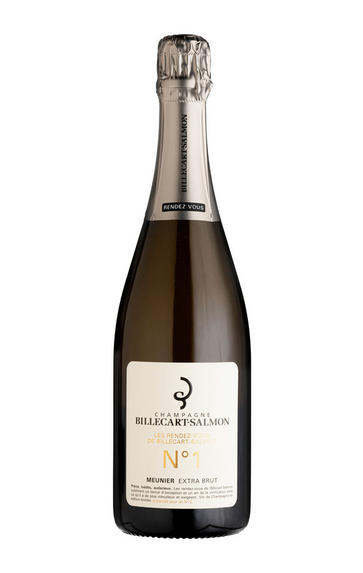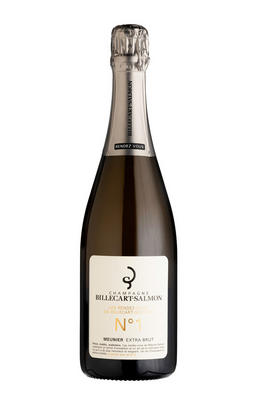
Champagne Billecart-Salmon, Les Rendez-Vous, No. 1, Pinot Meunier, Extra Brut

Critics reviews
The wine opens with a slightly floral aspect and a hint of pear tart with lemon overtones. There is a sense of levity, but more air introduces a more brooding, darker notion of candle wax. That lovely but full-flavoured lightness also characterises the palate with wonderfully bright tension. Again that darker, somehow earthy Meunier note adds a hint of waxiness that almost verges onto smokiness – especially on the finish – while the surface remains bright, light and lemony. The mousse is fine and the wine has a pleasant suppleness and this sense of lightness just begs for another sip. Drink 2020 - 2025
Anne Krebiehl MW, Decanter.com (Sept 2020)
About this WINE

Champagne Billecart-Salmon
Champagne Billecart-Salmon was founded in 1818 in the village of Mareuil-sur-Aÿ near Epernay. It remains family-owned and run; Mathieu Roland-Billecart represents the seventh generation here, following in the footsteps of founders Nicolas-François Billecart and Elisabeth Salmon.
A family tasting committee meets weekly, joined by chef du cave Florent Nys. The eight-person panel includes three generations of the family, notably including Jean Roland-Billecart (who alone has over 75 vintages of experience). Not one cuvée is released until every member of the committee agrees on the blend.
Billecart-Salmon is a large Champagne House, with around 100 hectares of vines of its own. The process of organic conversion for the vineyards was started in 2019. The house also buys fruit from growers covering another 300 hectares of vines. Most of the fruit comes from the Champagne sub-regions of Montagne de Reims, Vallée de la Marne and Côte des Blancs.

Rosé Champagne
Rosé wines are produced by leaving the juice of red grapes to macerate on their skins for a brief time to extract pigments (natural colourings). However, Rosé Champagne is notable in that it is produced by the addition of a small percentage of red wine – usually Pinot Noir from the village of Bouzy – during blending.
Recommended Producers : Billecart Salmon (Elizabeth Salmon Rose), Ruinart

Champagne blend
Which grapes are included in the blend, and their proportion, is one of the key factors determining the style of most Champagnes. Three grapes are used - Pinot Noir, Chardonnay and Pinot Meunier.
26% of vineyards in Champagne are planted with Chardonnay and it performs best on the Côtes des Blancs and on the chalk slopes south of Epernay. It is relatively simple to grow, although it buds early and thus is susceptible to spring frosts. It produces lighter, fresher wines than those from Burgundy and gives finesse, fruit and elegance to the final blend. It is the sole grape in Blancs de Blancs, which are some of the richest long-lived Champagnes produced.
Pinot Noir accounts for nearly 40% of the plantings in Champagne and lies at the heart of most blends - it gives Champagne its body, structure, strength and grip. It is planted across Champagne and particularly so in the southern Aube district.
The final component is Pinot Meunier and this constitutes nearly 35% of the plantings. Its durability and resistance to spring frosts make the Marne Valley, a notorious frost pocket, its natural home. It ripens well in poor years and produces a soft, fruity style of wine that is ideal for blending with the more assertive flavours of Pinot Noir. Producers allege that Pinot Meunier lacks ageing potential, but this does not deter Krug from including around 15% of it in their final blends.


Buying options
Add to wishlist
Description
The wine opens with a slightly floral aspect and a hint of pear tart with lemon overtones. There is a sense of levity, but more air introduces a more brooding, darker notion of candle wax. That lovely but full-flavoured lightness also characterises the palate with wonderfully bright tension. Again that darker, somehow earthy Meunier note adds a hint of waxiness that almost verges onto smokiness – especially on the finish – while the surface remains bright, light and lemony. The mousse is fine and the wine has a pleasant suppleness and this sense of lightness just begs for another sip. Drink 2020 - 2025
Anne Krebiehl MW, Decanter.com (Sept 2020)
wine at a glance
Delivery and quality guarantee